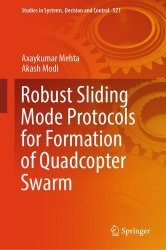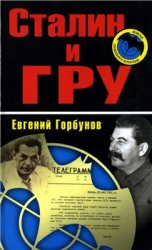 Название: Robust Sliding Mode Protocols for Formation of Quadcopter Swarm
Название: Robust Sliding Mode Protocols for Formation of Quadcopter SwarmАвтор: Axaykumar Mehta, Akash Modi
Издательство: Springer
Год: 2024
Страниц: 165
Язык: английский
Формат: pdf (true), epub
Размер: 31.2 MB
This book presents several robust sliding mode protocols for achieving the formation and tracking of Quadcopter swarm for a given pattern. In entire book, the concept of leader-follower formation control of a multi-agent system is exploited for deriving the protocols and the graph theory is used to represent the communication between the Quadcopters. The book covers two types of formation protocols of the Quadcopter swarm namely, continuous-time sliding mode protocols and discrete-time sliding mode protocols. First, the continuous-time higher order sliding mode protocols using super-twisting algorithm are designed for formation using linear and non-linear models of Quadcopter. Then, the discrete-time sliding mode protocols using power rate reaching law, discrete-time super twisting algorithm, and exponential reaching law are presented. The protocols are thoroughly analysed for robustness, chattering, control effort, and convergence time for achieving the formation. Also, the stability conditions using the Lyapunov function are derived to ensure the stability of the swarm with each protocol. Further, each chapter includes extensive simulation and comparative studies to show the efficacy of each protocol. The book will be useful to graduate students, research scholars, and professionals working in the domain of civilian and military usage of the drone technology.
Recently, the interest in formation control of Unmanned Aerial Vehicles (UAVs) has significantly increased due to their several applications in defense, farming, rescuing, surveillance, and many more unexplored areas. Broadly, there are two types of UAVs, namely, rotor-craft UAVs and Fixed wing UAVs. Compared to fixed-wing UAVs, rotor-craft UAVs have a couple of advantages, including the ability to hover in one place and perform vertical takeoff and landing (VTOL). Among all varieties of rotor-craft UAVs, the Quadcopter is the most popular due to its ability to hover and maneuver in tight spaces, making it ideal for tasks that require more precise positioning and control than traditional rotor-crafts. The Quadcopter features four BLDC motors coupled to four propellers. Each motor in a cross-sectional frame is positioned at the end of its arm. Also, the propeller rotation of the Quadcopter in a three-dimensional environment is made possible by the upward thrust forces. It features an onboard micro-controller that can stabilize the Quadcopter to the desired set point. It also has a battery connected to it, which may provide power and control to the motors through electronic speed controllers (ESCs).
A Quadcopter swarm, also known as a drone swarm, refers to a group of multiple Quadcopters working together in a coordinated manner to achieve a common goal. These swarm can be controlled autonomously through a central controller or through a distributed controller, allowing them to perform complex tasks that would be challenging or impossible for a single drone to accomplish. In general, Quadcopters are frequently utilized aerial vehicles for formation flight due to their characteristics, and a wide range of civil applications. By leveraging the power of multiple Quadcopters working together, swarm technology offers several advantages over single drone operations, including increased efficiency, improved redundancy, and enhanced capabilities. Formation control is coordinated control where multiple Quadcopters follow a predefined trajectory. The goal of formation control is to maintain a specific spatial arrangement between the agents, while also ensuring that each Quadcopter avoids collisions with other Quadcopter and obstacles in the environment. Therefore it is believed that the formation of multiple low-cost Quadcopters is more effective in accomplishing the goal than a single high-tech Quadcopter. In order to achieve the formation, the Multi-Agent System (MAS) concept has been used widely for controlling and synchronizing multiple systems like robotic arms, helicopter systems, and many more.
Скачать Robust Sliding Mode Protocols for Formation of Quadcopter Swarm
[related-news] [/related-news]
Комментарии 0
Комментариев пока нет. Стань первым!















